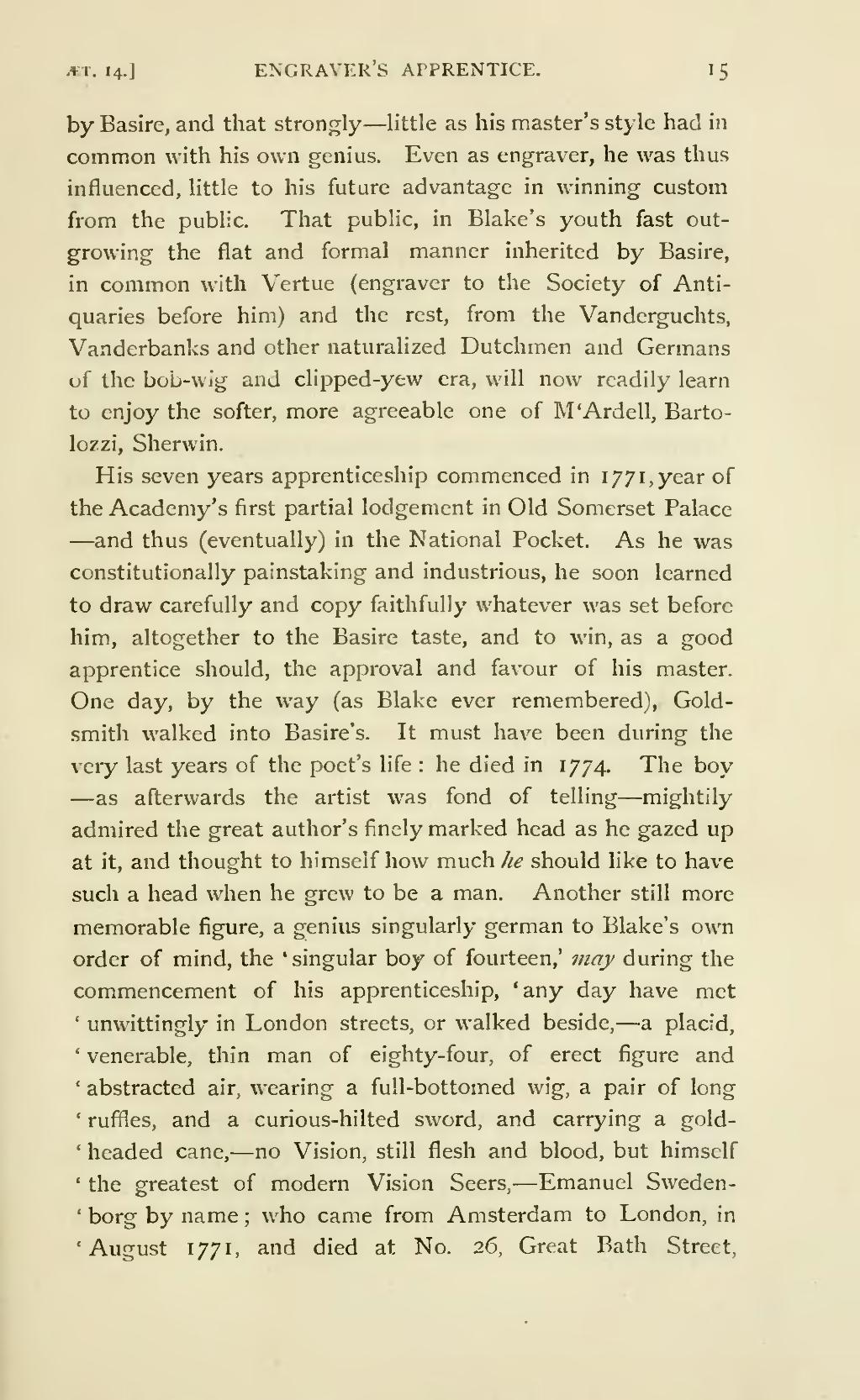by Basire, and that strongly—little as his Master's style had in common with his own genius. Even as engraver, he was thus influenced, little to his future advantage in winning custom from the public. That public, in Blake's youth fast out-growing the flat and formal manner inherited by Basire, in common with Vertue (engraver to the Society of Antiquaries before him) and the rest, from the Vanderguchts, Vanderbanks and other naturalized Dutchmen and Germans of the bob-wig and clipped-yew era, will now readily learn to enjoy the softer, more agreeable one of M'Ardell, Bartolozzi, Sherwin.
His seven years apprenticeship commenced in 1771, year of the Academy's first partial lodgement in Old Somerset Palace—and thus (eventually) in the National Pocket. As he was constitutionally painstaking and industrious, he soon learned to draw carefully and copy faithfully whatever was set before him, altogether to the Basire taste, and to win, as a good apprentice should, the approval and favour of his master. One day, by the way (as Blake ever remembered), Goldsmith walked into Basire's. It must have been during the very last years of the poet's life: he died in 1774. The boy—as afterwards the artist was fond of telling—mightily admired the great author's finely marked head as he gazed up at it, and thought to himself how much he should like to have such a head when he grew to be a man. Another still more memorable figure, a genius singularly german to Blake's own order of mind, the 'singular boy of fourteen,' may during the commencement of his apprenticeship, 'any day have met unwittingly in London streets, or walked beside,—a placid, venerable, thin man of eighty-four, of erect figure and abstracted air, wearing a full-bottomed wig, a pair of long ruffles, and a curious-hilted sword, and carrying a gold-headed cane,—no Vision, still flesh and blood, but himself the greatest of modern Vision Seers,—Emanuel Swedenborg by name; who came from Amsterdam to London, in August 1771, and died at No. 26, Great Bath Street,
